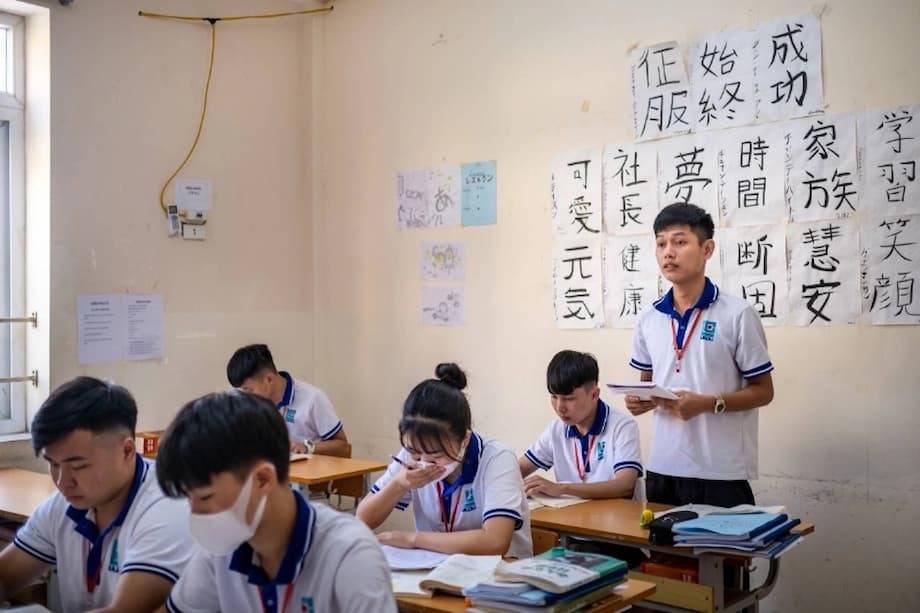Japan’s New Residency System for Foreign Workers: A Major Shift in Immigration Policy
In a landmark move to address its chronic labor shortages and demographic challenges, Japan has announced the launch of a new residency system for foreign workers, set to begin in April 2027. This sweeping reform will abolish the much-criticized Technical Intern Training Program and introduce a new framework called the Employment for Skill Development (ESD) program. The new system aims to systematically develop foreign talent, improve worker protections, and create clearer pathways for long-term residency and integration into Japanese society.
- Japan’s New Residency System for Foreign Workers: A Major Shift in Immigration Policy
- Why Is Japan Overhauling Its Foreign Worker Policy?
- What Is the New Employment for Skill Development (ESD) Program?
- Addressing Labor Shortages and Industry Needs
- Improving Worker Protections and Rights
- How Will the New System Work in Practice?
- Broader Implications and Regional Competition
- Challenges and Criticisms
- Expert and Official Perspectives
- In Summary
Why Is Japan Overhauling Its Foreign Worker Policy?
Japan’s population is aging rapidly, and its birthrate continues to decline. With one of the world’s highest life expectancies and a shrinking working-age population, the country faces acute labor shortages in key sectors such as manufacturing, agriculture, construction, and healthcare. Despite high labor force participation rates among women and seniors, these efforts have not been enough to fill the gaps. Automation and technology offer some relief, but many industries still struggle to find enough workers.
Historically, Japan has been cautious about immigration, with foreign nationals making up only about 2% of its total population—far below the OECD average of 10%. However, the number of foreign workers has quadrupled since 2008, reaching a record 2.3 million in 2024. Most of these workers come from Vietnam, China, and the Philippines, and are employed in sectors facing the most severe shortages.
The Technical Intern Training Program (TITP), introduced in 1993, was originally designed as a skills-transfer initiative for developing countries. Over time, however, it became a de facto guest worker program, drawing criticism for labor rights abuses, poor working conditions, and limited opportunities for career advancement or permanent residency. Reports of unpaid wages, harassment, and long work hours were common, leading to calls for comprehensive reform.
What Is the New Employment for Skill Development (ESD) Program?
The ESD program represents a fundamental shift in Japan’s approach to foreign labor. Set to launch in April 2027, it will replace the TITP and unify its covered sectors with those under the Specified Skilled Worker (SSW) system, which was introduced in 2019 for more highly skilled roles. The ESD program will:
- Allow foreign workers to stay in Japan for three years under a structured training and employment framework.
- Enable workers to change employers within the same industry after one to two years, provided they meet Japanese language and professional skill requirements.
- Require both foreign workers and their employers to pay taxes and social insurance, ensuring better integration and social protection.
- Mandate at least 100 hours of comprehensive Japanese language education, with employers providing financial support for this training.
Unlike the previous system, which restricted job changes and often left workers vulnerable to exploitation, the ESD program is designed to offer greater flexibility, improved working conditions, and a clearer path to long-term residency.
Pathway to Permanent Residency
After completing three years in the ESD program, foreign workers will be eligible to transition to the Specified Skilled Worker (SSW) visa. The SSW system has two categories:
- SSW Type 1: Allows workers to stay in Japan for up to five years in 16 (soon to be 19) designated industries. Holders must pass skills and language tests.
- SSW Type 2: For more advanced workers, this visa permits unlimited renewals, family accompaniment, and opens the path to permanent residency.
This integration creates a streamlined pathway from initial training to long-term employment and even permanent settlement for those who wish to make Japan their home.
Addressing Labor Shortages and Industry Needs
The new residency system is specifically designed to target industries with the most severe labor shortages. As of 2025, the government plans to expand the number of sectors covered by the SSW and ESD programs from 16 to 19. The new sectors include:
- Distribution warehouse management
- Linen supply services for hotels and accommodation facilities
- Resource recycling and waste treatment
These additions reflect the government’s recognition that labor shortages are not confined to traditional sectors like agriculture and construction, but also affect logistics, hospitality, and environmental services.
To prevent an excessive concentration of foreign workers in major urban centers, the government will introduce transfer limits in Japan’s eight most populous prefectures (including Tokyo, Osaka, and Aichi). For example, job changers can make up no more than one-sixth of the foreign workforce at businesses in these areas, unless they are located in depopulated communities. In contrast, rural companies that demonstrate strong support for workers and language training may be allowed to employ up to three times the standard number of foreign workers.
Improving Worker Protections and Rights
One of the main criticisms of the outgoing Technical Intern Training Program was its vulnerability to abuse. Restrictions on changing employers left many trainees trapped in exploitative situations, leading to high rates of disappearances and even illegal activity as workers sought to escape debt and poor conditions. Vietnamese workers, in particular, have faced significant challenges due to high migration costs and exploitative brokers in their home country.
The new ESD program aims to address these issues by:
- Allowing job changes within the same industry after a set period, provided language and skill requirements are met.
- Mandating stronger labor protections and compliance checks for employers.
- Requiring both workers and employers to pay taxes and social insurance, promoting fair treatment and social integration.
- Providing exemptions from residency time limits for workers unable to work due to pregnancy or childbirth, ensuring that family life is respected and protected.
Additionally, the government is implementing a rigorous screening system to deny visa renewals to foreign residents who have not properly paid taxes, medical expenses, or social insurance premiums. This measure, set for introduction by June 2027, is intended to ensure compliance and maintain public trust in the immigration system. However, some advocacy groups warn that such policies could increase anxiety and discrimination toward foreign residents if not implemented carefully and transparently.
How Will the New System Work in Practice?
Under the ESD program, foreign workers will enter Japan for a three-year period of skill development in one of the designated industries. During this time, they will receive structured training, language education, and workplace support. After one to two years, and upon meeting certain criteria, they may change employers within the same industry, offering greater flexibility and protection against abusive workplaces.
Upon successful completion of the ESD program, workers can apply for the SSW Type 1 visa, which allows them to remain in Japan for up to five additional years. Those who gain further skills and experience may qualify for the SSW Type 2 visa, which offers unlimited renewals, family reunification, and a pathway to permanent residency.
To ensure the system benefits both workers and Japanese society, the government is:
- Setting sector-specific quotas and rules to balance labor supply between urban and rural areas.
- Requiring employers to demonstrate high standards of support and compliance to hire transferring workers.
- Expanding the list of eligible industries based on ongoing labor market analysis.
Integration and Social Support
The Japanese government has also introduced broad measures to support the integration of foreign residents. These include practical support for daily life, language education, and initiatives to promote coexistence between Japanese and foreign communities. Such efforts are seen as essential for building a more inclusive society and ensuring that foreign workers can contribute fully to Japan’s economic and social life.
Broader Implications and Regional Competition
Japan’s decision to overhaul its foreign worker policy comes at a time of intensifying regional competition for labor. Neighboring countries like South Korea and Taiwan are also expanding their foreign workforce programs, and Japan’s relative economic appeal has declined in recent years. For example, South Korea surpassed Japan in nominal GDP per capita in 2022, prompting Japanese policymakers to act swiftly to maintain the country’s attractiveness to foreign talent.
By creating more permanent pathways for foreign workers and improving labor protections, Japan hopes to attract and retain the talent it needs to sustain its economy. The reforms also signal a gradual shift in Japan’s traditionally restrictive stance on immigration, though experts note that the country still falls short of being a true “country of immigration” by international standards.
According to a policy analysis by the ASEAN+3 Macroeconomic Research Office, Japan’s evolving experience offers valuable lessons for other economies facing similar demographic shifts. Key recommendations for further improvement include enhancing work conditions, offering competitive wages, and fostering greater social integration for foreign workers.
Challenges and Criticisms
While the new system has been widely welcomed as a step forward, several challenges remain. The high cost of migration for workers from countries like Vietnam, driven by corrupt brokers and opaque fees, remains a significant barrier. Without addressing these issues, many workers may continue to face heavy debt burdens and the risk of exploitation.
There are also concerns about the potential for over-concentration of foreign workers in urban areas, which could exacerbate regional inequalities. The government’s proposed transfer limits and incentives for rural employment are designed to mitigate this risk, but their effectiveness will depend on careful implementation and ongoing monitoring.
Some advocacy groups and experts have raised concerns about the new compliance measures, such as denying visa renewals for unpaid taxes or medical bills. While intended to ensure fairness and public trust, these policies could inadvertently increase anxiety and discrimination toward foreign residents if not managed transparently and humanely.
Expert and Official Perspectives
Government officials have emphasized the importance of the new system in securing Japan’s economic future. Prime Minister Shigeru Ishiba’s Cabinet has described the reforms as essential for developing and retaining foreign talent, supporting key industries, and ensuring the long-term sustainability of the workforce.
In a statement, a government spokesperson explained:
“The new Employment for Skill Development program is designed to systematically develop foreign human resources and ensure they stay in Japanese workplaces for the long term. We are committed to creating a fair, transparent, and supportive environment for all workers.”
Experts on immigration and labor policy have generally welcomed the reforms, noting that they address many of the shortcomings of the previous system. However, they caution that more comprehensive changes may be needed if Japan is to become a truly open and inclusive society for immigrants.
In Summary
- Japan will launch a new residency system for foreign workers in April 2027, replacing the controversial Technical Intern Training Program with the Employment for Skill Development (ESD) program.
- The ESD program will allow foreign workers to stay for three years, change employers within the same industry, and receive structured language and skills training.
- After completing the ESD program, workers can transition to the Specified Skilled Worker (SSW) visa, which offers longer stays, family reunification, and a path to permanent residency.
- The reforms aim to address labor shortages, improve worker protections, and create clearer pathways for integration and long-term settlement.
- New compliance measures will require payment of taxes and social insurance, with stricter screening for visa renewals.
- Challenges remain, including high migration costs for some workers and concerns about regional labor imbalances and discrimination.
- Japan’s evolving policy reflects both the urgency of its demographic crisis and a cautious, incremental approach to immigration reform.



